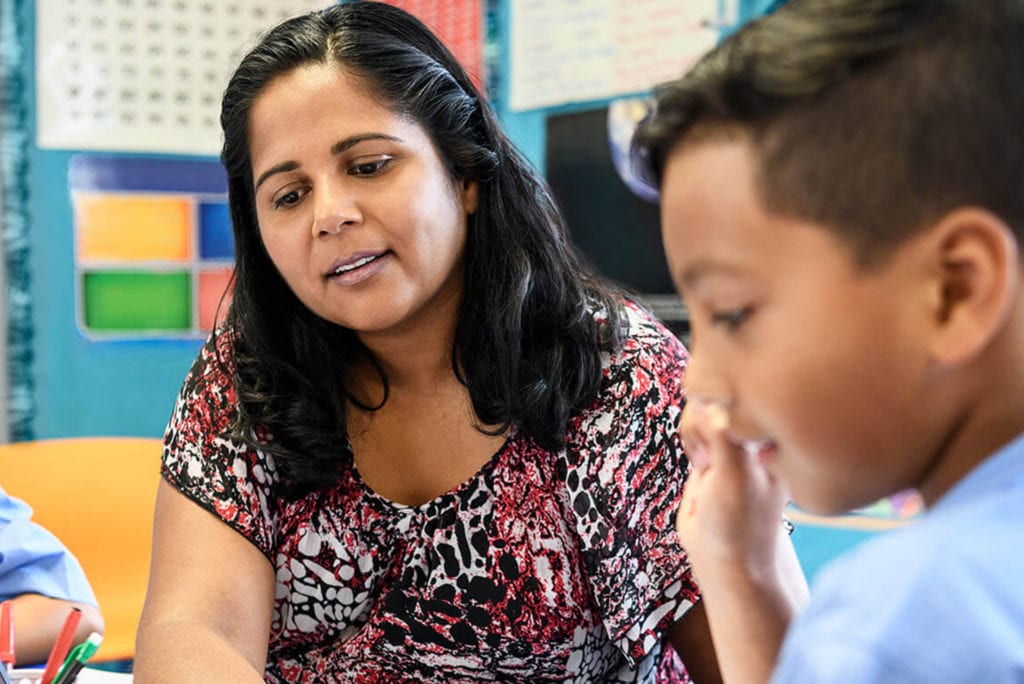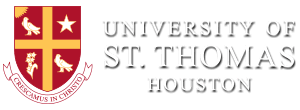Be Bold Blog
The University of St. Thomas (UST) is Houston’s Catholic University, committed to the Catholic intellectual tradition and the dialogue between faith and reason. Our blog is dedicated to helping you explore your future career possibilities and how to make the most of your college experience.
Becoming a Bilingual Teacher
7 Reasons to Consider Becoming a Bilingual Teacher
Today’s classrooms are more diverse than ever. Students come from all different racial, ethnic and socioeconomic backgrounds, which means school is often what introduces them to new experiences and even new languages.
In fact U.S. Census Bureau data shows that in 2019, more than 12 million children between the ages of 5 and 17 were speaking a language other than English at home. This is particularly important for aspiring teachers like you.
All future educators, particularly those who learned English as a second language, probably recognize the value in being able to communicate with each and every student. That’s clearly difficult to achieve if some students are facing a language barrier. But if you were to become a bilingual teacher, you would stand a much better chance of connecting with your entire class.
You might be surprised to know that there are even more perks to leading a dual-language classroom. For the right person, the advantages below are more than enough reason to pursue this rewarding career.

7 Advantages of being a bilingual teacher
How does bilingual education benefit students and educators alike? Here are some particular advantages to be aware of.
1. Your students can develop proficiency in multiple languages
While it might seem silly to point out that a bilingual teacher can help students become proficient in multiple languages, that’s actually quite powerful. You would be able to help countless students develop a lifelong skill that can benefit both their personal and professional lives. All sorts of circumstances, from a casual social interaction to a job interview, could draw on those language skills.
Teachers who work with young students could have a particularly strong impact. Introducing students to another language early in their education is often the best way to ensure proficiency. Some research indicates that children’s ability to learn the grammar of a new language diminishes with age, particularly after age 17.
2. You could help students achieve better academic outcomes
It might seem like learning another language in tandem with other material would lead to subpar results across subjects, but this just isn’t the case. Students in these classrooms actually tend to fare quite well as they progress in their education.
Research shows that students in bilingual programs, also called dual-language immersion programs, achieve greater reading performance than their peers who are solely instructed in English. And those who are in bilingual classes that include their native language are more likely to be classified as fully proficient in English near the end of elementary school. One study even reports that dual-language immersion students are more likely to succeed in math.
3. You may be able to develop better rapport with families
In many ways, interacting with families is just as important for teachers as leading the classroom. Parents want to know how their child is doing, what areas need improvement and how they can provide further support.
It’s far easier to engage in these conversations if you’re able to communicate with parents in a way that makes them feel comfortable, whether that means speaking English, Spanish or another language. Once you’ve established two-way communication, you stand a far greater chance of establishing and fostering relationships with your students’ families.
4. You can help students develop their appreciation for other cultures
According to the Center for Applied Linguistics, a good dual-language immersion program should support three primary pillars: bilingualism and biliteracy, high academic achievement and sociocultural competence. The third pillar is often called the “forgotten” one, but it’s critical.
An education that leverages two languages can help students recognize and appreciate cultural differences, which promotes conversations around equity and social justice. In effect, teachers who lead these classrooms can show their students how to be respectful and engaged members of their community.
5. You could be a valuable resource for other teachers
Teachers who can speak multiple languages are in short supply (there’s more information on that below), so it’s not unusual for other educators to reach out to them for support when working with students who are learning English. Bilingual teachers can assist all different types of instructors in numerous ways. They can co-teach in the same classroom, suggest learning strategies and even act as interpreters when needed.
6. You’ll likely have greater job security
Based on the country’s changing demographics, it’s easy to understand why there would be a need for educators who can teach other languages and work with students who are learning English. But there’s actually concrete evidence to show just how needed bilingual instructors are.
According to teacher shortage data from the U.S. Department of Education, more than 30 states as well as the District of Columbia currently have a strong need for more bilingual, foreign language and English as a second language instructors.
The need for qualified teachers who can address these education gaps is so great that those who commit to working in a designated shortage area may even qualify for a grant or student loan forgiveness program. The most recent nationwide shortage report details some of these options.
7. You could increase your earning potential
Clearly, more and more schools are recognizing it’s incredibly valuable to hire educators who can speak multiple languages. Many administrators are even willing to offer a higher salary to bilingual teachers, particularly in diverse states like Texas.
Make a meaningful difference as a bilingual teacher
There are clearly numerous advantages to becoming a bilingual teacher. By using your natural communication abilities in the classroom, you would be able to benefit your career, your students and your larger community. If this sounds like the right path for you, it might be time to start thinking about how you can begin working your way toward this rewarding teaching role.
While you already have the necessary language skills, you may be missing the necessary education. As you evaluate your options, you’d be wise to focus on programs like the one at the University of St. Thomas (UST) that offer training specifically for dual-language teachers. Learn more about how you can start your education journey by visiting the UST Dual Language Program page.
Ready to take the next step?
Related articles
About UST
The University of St. Thomas (UST) is Houston’s Catholic University, committed to the religious, ethical and intellectual traditions of Catholic higher education. For more than 70 years, we’ve been graduating students like you into successful careers in medicine, education, business, public administration and more – throughout Houston and across the globe.

